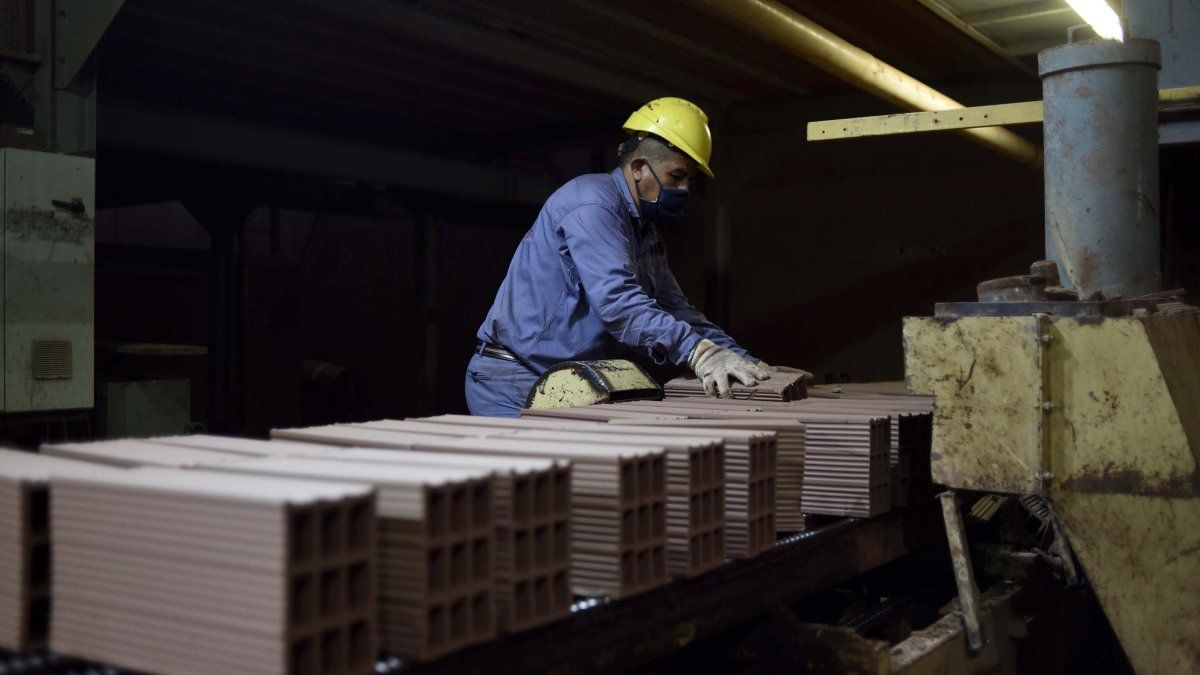For its part, the branch of the non-metallic minerals had in June the second most pronounced decline among sectors and also interrupted the monthly improvements observed in the previous two months, while sales of construction supplies suffered in a shorter month, explained FIEL.
In the case of the basic metal industriescontributed to his downfall the decline in aluminium productionwhile The steel industry continued to show widespread declines across the various activity segments in the process of adjusting stocks to the fall in demand from related sectors. “The metalworking industry has continued its year-on-year decline for the last seventeen months,” he explained. FAITHFUL.
Within the bloc, “suppliers in the energy and mining sectors show better performances and in the sector of Farm Equipment “There are plants with brakes on the fall,” they added.
Between the chemicals and plastics There were widespread setbacks, with the exception of the basic petrochemical productionwhile the decline in activity in the tyre production sector deepens. Finally, the food and beverage sector It was the only one that in the month of June registered an interannual growth in production with the contribution of both sub-branches.
Historical comparison
Data for the second quarter show that the industry contracted by 12.8% compared to the same quarter in 2023. Thus, activity has accumulated five quarters of decline in the year-on-year comparison.
“The drop in production in the quarter is only surpassed by that observed in mid-1985 with the launch of the Southern Plan, in mid-1989 and early 1990 with hyperinflationary crisesin the regime change that resulted from the Convertibility at the beginning of 2002, and in the second quarter of 2020 in full Covid pandemic“, they explained.
In the seasonally adjusted measurement, The industry contracted by 1.5% compared to the first quarter of 2024reducing the rate of decline observed in the previous quarter.
As for activity in the first half of the year, The industry has accumulated a decline of 11.5% compared to the same period last year maintaining the rate of contraction accumulated since the first four months. In the first six months, all branches with the exception of textile inputs show a drop in production compared to the same period in 2023.
The biggest decline continues to be shown by the non-metallic mineral production with a 31.8% drop in the year-on-year comparison. The branch was followed by Automotive industry which had a drop of 26.8%, the basic metal industries with a decrease in activity of 19.4%, the metalworking industry registered a decline of 16%, cigarette shipments fell by 13.7% and the production of chemicals and plastics fell by 12.8%, in each case in the first six months of the year and in the year-on-year comparison.
With a decrease below the average, the branch of the food and drinks With a 3.5% cut, the process of Petroleum (1.4%) and the production of paper and cellulose (1%) compared to the accumulated between January and June 2023. Finally, the production of textile inputs (0.2%) equaled the level of production accumulated in the first half of last year.
When grouping the industry by the type of goods produced, we have that The first six months of the year all show a decline compared to the same period of the previous year. The largest drop was recorded in the production of capital goods, which fell by 20.4%, followed by that of durable consumer goods, which fell by 19.9%, in each case compared to the same period in 2023.
With a contraction less than average, they are placedIntermediate goods, which recorded a reduction of 11% in the periodwhile non-durable consumer goods showed a decline that reached 4.9% in the first six months and in the year-on-year comparison.
With the above, Durable consumer goods and capital goods showed an increase in the accumulated decline in the semesterwhile non-durable consumer goods reduced it due to the contribution of food and beverage production.
In seasonally adjusted terms, Industrial production in June registered a 2% increase compared to the previous monthmarking two months of improvement after the April impasse that cut the increase seen in March. In addition to the above, there are signs that the decline in industrial production is slowing down.
What the data tells us
As mentioned above, lThe drop in industrial production in the second quarter of 2024 is only surpassed by those recorded in the main crises of the last forty years.
“It is interesting to note that the industrial recoveries that began in July 1985, March 1990, February 2002 and April 2020 were among the longest, and with the exception of the one in the first part of the nineties – cut short by the impact of the Tequila crisis – the rest had a dynamic above average,” explained FIEL.
They added: “For a recovery with characteristics similar to those observed in the past, the current macroeconomic scenario does not yet reveal the factors that will boost activity. In the short term, credit recovery appears to have the greatest potential.”
In summary, from FIEL: “The industry in June again showed a year-on-year drop in production after being impacted by The halt in activities in the third week deepened the specific problems faced by the productive sectors. However, in seasonally adjusted terms, there was an increase for the second month. In July, energy restrictions on industry were not severe and in that month the reduction in the rate of decline in industrial production would resume.”
Source: Ambito




